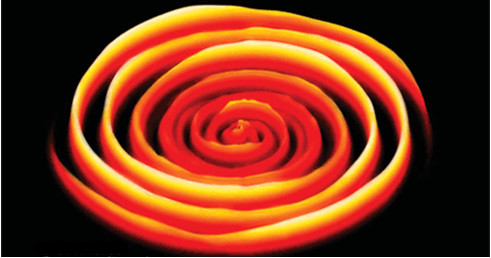A part of our work has focused on the control of the dynamics of plasma mirrors, and of the resulting attosecond light pulses and high-order harmonics. We have first shown that this dynamics can be controlled through the phase properties of the driving laser [Que08]. In particular, shaping the spatial phase of the laser beam has a direct effect on the divergence of the harmonic beams produced on plasma mirrors. This makes it possible to compensate the effect of the intensity-dependant phase. A similar effect occurs in the time-domain, leading to a control on the spectral widths of individual harmonics.
In collaboration with the PCO group of LOA, we have then shown that the emission times of CWE attosecond pulses can be varied by changing the Carrier-Envelop relative Phase (CEP) of a few-cycle laser pulse [Bor12]. This has been the first plasma physics experiment with a controlled CEP.

Figure 3: effect of the CEP phase of harmonic spectrum from plasma mirrors. Artistic view of the CWE harmonic spectrum generated by a few-cycle laser pulse (5 fs duration), as a function of its Carrier-Envelop relative Phase (used here as a polar coordinate). From cover of Nature Physics, May 2012
More recently, we have obtained the first direct and quantitative experimental evidence of the influence of the scale length of the density gradient at the plasma surface on the harmonic signal [ Kah13]. CWE was found to be optimized from extremely short density gradients (λ/50), while ROM is maximal for density gradients of about λ/10. This parameter is also found to have to strong effect on the harmonic divergence [Vin14].
[Bor12] Borot et al, Nature Physics 8, 416-421 (2012)
[Kah13] Kahaly et al, Phys. Rev. Lett. 110, 175001 (2013)
[Que08] Quéré et al, Phys. Rev. Lett. 100, 095004 (2008)
[Vin14] Vincenti et al, Nature Communications 5, 3403 (2014)


